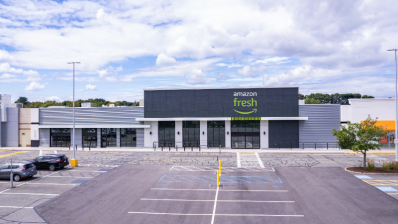What is Build-to-Rent?
Since the Great Recession, the number of owner-occupied properties has decreased by 1.4% (2006-2016). Meanwhile, single-family rental (SFR) homes accounted for more than 50% of the gains in rental housing stock from 2005 to 2015. Out of the downturn, private equity firms'“including Invitation Homes (REIT), Starwood Capital, Blackstone, and Colony Capital'“started acquiring huge portfolios of single-family rentals (SFRs). 'Build-to-Rent' (BTR) is an evolution of this trend: entire communities of single-family rentals in one professionally-managed, high-amenitized community.
Build-to-Rent takes the best aspects of SFRs and upgrades the experience by developing all homes inside a professionally managed community. These BTR properties aren't just a low-density multifamily property or a locationally-clustered single-family rental portfolio. They are much more akin to traditional, gated residential neighborhoods with great community amenities'“swimming pools, tennis courts, dog parks'“and professional management without burdening residents with HOA costs. Or servicing mortgage debt.
What Is Driving Consumer Demand for Build-to-Rent Homes?
BTR homes are finding renters across all demographics, but especially among millennials. The U.S. Census Bureau estimates that 65% of Americans under the age of 35 currently rent. According to a study on millennial homeownership from the Urban Institute, the homeownership rate of those aged 25 to 34 is only 37%, which is 8% lower than the homeownership rates of Gen Xers and baby boomers at the same age. What accounts for the discrepancy between the generations?
Even with a good job and stable income source, many millennials are saddled with student loans, credit card debt and/or a lack of substantial savings. Even in a two-income household, it's hard for this generation to save the downpayment on a $500,000 home. 43% of this age group have saved less than $3,000 for a down payment, according to a Unison Home Buyer Survey. Although 92% of millennials consider homeownership a good investment, 48% of young adults say they will delay buying a home because of their student loans. Many are still building their career as they work to establish, define or stabilize their secular life, making homeownership impractical or even fiscally impossible.
And yet the desire for more space and a sense of community are strong. With privacy, quality, convenience and luxury, these BTR neighborhoods check off all the boxes on renters' lists (i.e. gym, laundry, yards, lush landscaping, etc.), affording them the kind of work-play-live lifestyle they want, yet remaining free from long-term financial burdens.
The demand for single-family rentals has prompted several developers to tap into the market with a new product: cohesive single-family rental communities filled by niche renters with lifestyle needs that are unlike those of apartment renters.
Why Are Investors Interested in Build-to-Rent?
Beyond the demographic trends and desirable renter profiles, the Build-To-Rent sector has also passed through its initial concept phase BTR projects have been successfully operating for several years and investors are equipped with better comps and operational data, enabling them to make more educated decisions. Meanwhile, the sponsors behind these BTR communities often have business plans focused on delivering strong returns with out-performing upside.
The BTR market has also demonstrated a unique ability to achieve 'Market Rate Premiums' over competing Class A multifamily assets. CNBC reported that, ''the rents for single family are growing fast at 4.5% annually now compared with 3% rent growth for multifamily apartments, according to John Burns Real Estate Consulting. There is also much less turnover in single-family rentals, and the rental market is much less volatile than the home sales market.'
Now that many lenders (including the Agency Lenders: Freddie Mac and Fannie Mae) have underwritten and approved the product type for loans, the investor community is able to expect more consistency on debt terms and to more easily model a long-term hold period. As an asset class, BTR has seen exit cap rates that compare well with traditional multifamily assets, with cap rates ranging from 4.75% to 5.5%.
Why Crowd Street is Interested in Build-To-Rent
First and foremost, the Crowd Street Investments team is now approving Build-to-Rent deals because, as an asset class, it has proven out the concept and there is sufficient 3rd-party data to review the sponsor's underwriting and business plan in accordance with our deal review process.
According to the National Association of Home Builders, in 2017, 37,000 homes were built as rentals. In 2018, that number jumped to 43,000. About 16 million rental properties today are single-family homes, and another 13 million rental households are expected to be formed by 2030, according to the Urban Institute.
Secondly, our Investments team believes in the demographic tailwinds associated with this asset class. The potential for desirable renter segments dual-income rental households and other high-wage earning households to embrace this asset class is there, thanks in large part to the BTR amenities designed to cater to this demographic.
Overall, the timing, proof of concept, and market tailwinds make the Build-to-Rent asset class a very interesting opportunity for investors to review and consider.
Investors can find a variety of BTR and other real estate offerings across different categories on the Crowd Street commercial real estate investing platform.


